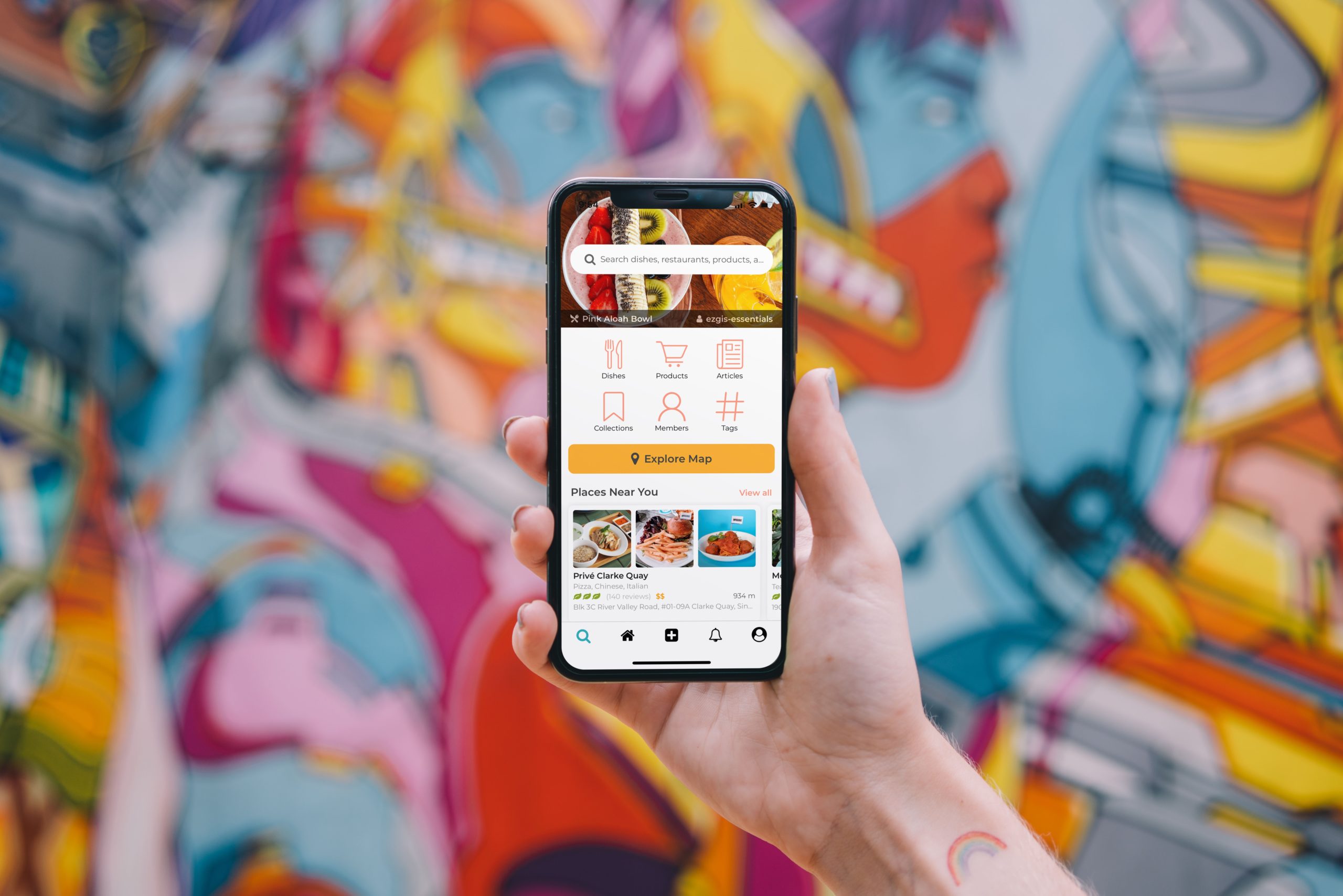The Price of a Mobile App Development

Are you interested in learning more about mobile app development for your organization? Or are you an entrepreneur who has an excellent idea, but you’re still figuring out how much it would cost to turn that idea into reality?
Here is all the information you need before jumping on this adventurous ride of mobile app development.
In this article, you will learn about all of the aspects of app development. We will be answering some important questions that are essential to consider before investing in an app venture.
Categorizing The Application
With the increasing affordability of smartphones across the world, the app industry has exploded in the last 10 years. Causing mobile app development to broaden and has lead to the development of many different types of apps. The possibilities have become endless.
First, you should categorize the app you want to create under one of these eight categories.
- Utilities
- Entertainment
- Games
- News
- Productivity
- Lifestyle
- Social Networking
- Health and Fitness
Select Your Mobile App Platform: Native or Hybrid
Next, you have a choice to make. Native or Hybrid?
Along with your requirements and project specifics, this is likely one of the most important decisions you need to make before investing your hard-earned money.
Native apps: These are specific to each platform – iOS or Android. The developer needs to write code based on the platform being used. The code language differs for iOS and Android. iOS uses Swift, while Android uses the Java coding language.
Hybrid apps: As the name suggests, hybrid apps are a combination of both platforms, iOS, and Android. There is now web support for hybrid apps making them even more accessible. Common options for development languages under this category are React Native and Flutter. The most important advantage Hybrid has over Native, is that the same codebase can be used to run on multiple platforms which reduces the overall cost and time. Basically, you only have to write code once!
Hybrid is the best approach for those who have a tight budget, and want to get their application built quickly on both platforms. On the other hand, those who are certain of their user base, and have more time and budget overall, should go for Native.
The best advice is to consult with your team about what should be the best platform based on two things: your user base, and timeline.

Going for MVP
When it comes to reviews, users have high standards. Nobody wants a slow or glitchy product. It is only right that you go all in, to ensure you develop an app that provides a seamless user experience. You can start with an MVP which is a smaller version of the final app (only including the most important features) first.
The perfect successful example of the MVP is Facebook. Facebook was released to a small group of people for testing and gaining feedback. Many of the features Facebook encompasses now were not included in the first few releases, allowing the platform to focus on its initial goal. It started with just the simple profile and news feed feature using the username and password. Soon it moved on to messenger, video calls, media uploads, and now, the stories feature.
Now that you know the pre-development barriers, It is time to learn what the exact development cost will be. Let’s discuss the options for each section of app development and discuss the average cost involved in these areas.
Cost details vary from individual to individual to organization. Freelancers can build apps at a low-cost c0mpared to big tech giants, however, you may be sacrificing quality and timeline, and professionalism. This decision is totally up to you based on your situation.
Wireframing
Wireframes are the backbone of any project. Wireframes serve as a middle ground between low-fidelity sketches and first interactive prototypes. The actual process of wireframing for mobile varies drastically. The better the clarity of wireframes, the better the code, and ultimately, the better the app will be.
Cost: 10% of the overall budget
User Access Management for Mobile App Development
User Access Management, also known as identity and access management, is the administration giving individual users within the system access to the tools they need at the right time. For businesses, this usually includes access to external applications, permissions, and security requirements.
Today, challenges arise as companies grow, and employees with varying roles increasingly use external enterprise solutions to do their jobs. An identity and access management solution helps manage this by providing a seamless way to manage user identities and access all in one place. There are many ways to do this, usually it is through authentication. You can try social login or normal login. Depending on the options for Social Media Login / Username-Email Login, if your app is pretty simple and needs no social media, you can use normal login and signup.
Cost: 5% of the overall budget
Features
Once you have your basic ideas, layout, and color scheme the way you want them, you need to start thinking about what the customer actually wants. If you don’t meet the customers’ needs, a competitor might, and as a result, you could lose significant business. There are a few features, which are nice to have and some which are must-haves, but many will make your app really stand out. Things to consider include: Email Notification, Push notification, Cloud computing, Real-time tracking, and more. The list is endless. So, decide and select what features are right for you based on budget and requirements.
Cost: 25% of the overall budget
Third-Party Plugins
Depending on the features you decide, the third-party plugins will be the next requirement. The more plugins, the higher the cost. Third-party plugins are basically software or libraries which help your feature work. Suppose you want a tracking system in case of getting the real-time feedback you need to integrate libraries like Pusher or Pubnub. All the third-party plugins usually have pricing plans based on users which you can review.
Cost: 15% of the overall budget based on users
Frontend & Backend Mobile App Development
It can be argued that app development can be the biggest factor in the cost of an app. Seasoned developers, who have successfully delivered multiple projects, are still scarce resources. That’s why coding an app usually accounts for 50–70 percent of the total cost of app development, and the coding times vary depending on the type of app. The front end is the View part of the app. The backend. is what allows the app to withstand huge loads and work smoothly under any conditions. This will entail more time spent on designing and building a complex app architecture. Moreover, you’ll require multiple programming languages to create your app’s backend, which means you’ll need to pay for a more diverse team of professionals.
Cost: 40% of the overall budget based on users
Server and Network Maintenance
Most apps nowadays run their backends on cloud service providers like AWS, Google Cloud, or Azure, which (depending on the scale required) can cost pennies or thousands of dollars each month. In addition, many third-party services (such as payment systems) that an app might use, operate under a SaaS model which requires subscription costs. As an app gains popularity, its needs in both these areas are likely to grow which in turn racks up the costs of its upkeep. Once an app has been battle-tested in the real world with real users, bugs are bound to show up and will need to be addressed continually.
Cost: 5%
Making a Profit
Mobile apps are critical for any business. Not just for smooth business operations and functioning, but also as a separate channel for revenue generation. As a mobile app development company here at Rubico, one of the most commonly asked questions that we hear is — how do apps make money?
Paid App: You can charge a user upfront to use your app. A percentage is charged by the stores on that payment.
Free App: Most of the apps available on app stores fit into this category. The only source of revenue is ads for a large number of users. If your app is being used by a lot of people, businesses will pay you to host their ads.
In-App Purchase: This is a process in which you provide the app for free to the end-user, but charge a subsequent amount for some premium features of the app. To access those areas users pay a subscription fee.
This should be the last thing on your mind. It takes time for apps to be a hit in the market, so, be patient. Focus on building the app first. If you are sure that its uniqueness will attract users, you can expect to do well.
Overall Cost of Mobile App Development
The cost of making a mobile app is most often based on the number of hours the project may take. The more difficult the functionality, the longer it will take to implement. Let me divide these into three categories:
Average: These apps include some basic functionality, don’t require integration with any third-party APIs, and may not need a backend infrastructure. Features of such applications may include standard UI components, a feed list, simple filters, and map markers. Developing a simple app like this usually takes about 250–400 hours.
Medium: These apps may include custom UI features, real-time chat, payment functionality, tablet and handset adaptation, integration with APIs, and a simple backend server. It takes around 1,000 hours to build such an app.
Complex: Highly complex apps include advanced functionality such as audio/video processing, real-time synchronization, custom animations, integrations with third-party services, complex backends with several types of database relationships, and more. The timeframe for building complex apps is 2,400+ hours. A full-fledged social media application, dating app, data collection, or video streaming apps may all fall into this category.
Conclusion:
Your mobile app development process is ready to begin! If you have any questions, or want to run your idea past a panel of experts, we’re here to talk!









